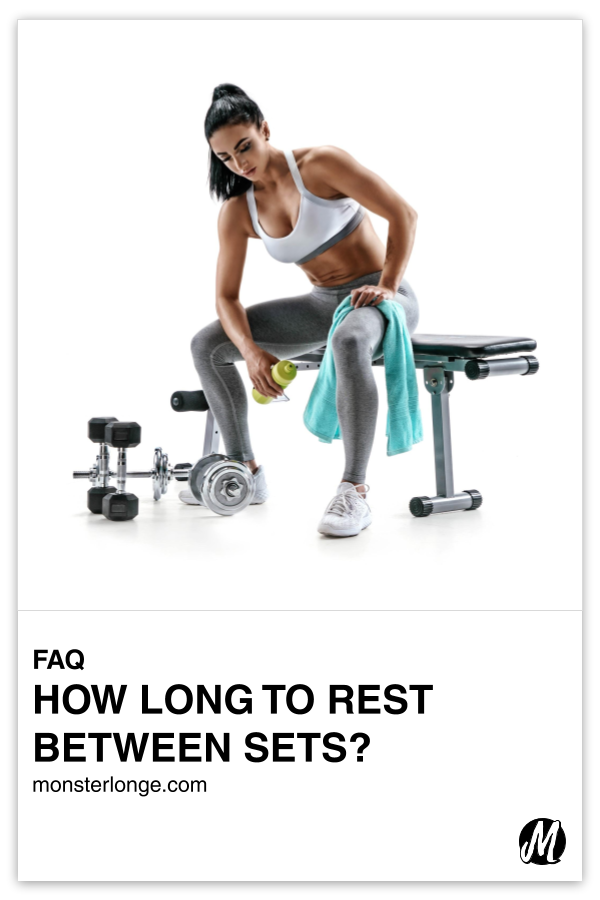
How Long To Wait Between Sets?
Ahhhhhhhhh…so your set is over and you don’t know if that gives you enough time to take a leisurely stroll to the water fountain clear across the other side of the gym, though there’s one even closer by and you have a water bottle with you that’s still full of water.
Well, the answer to how long to wait between sets depends mostly on your goal!1Other factors to consider include training experience, the type of exercise being performed, the order you’re performing your exercises, and the intensity of your workout. But I don’t have the time or interest to get into each particular situation, so nuh!!! *sticking my tongue out*
ENDURANCE
Rest Time: 20-60 seconds
If you’re lifting light weight for 12+ reps, then not a lot of demand is being placed on the muscles or central nervous system. So rest breaks should be kept short.
HYPERTROPHY
Rest Time: 1-2 minutes
Hypertrophy is the fancy word for muscle growth. To make the muscles grow in size, you have to lift moderate weight for 8-12 reps. Even more, those reps have to be pushed to or near failure. Because more weight is being used and the intensity is increasing, rest breaks should get longer to give the body more time to restore its energy — but not too long to decrease the hypertrophic effect of the anabolic hormones released by the body while lifting!2Don’t think I didn’t hear you pronounce hypertrophy as “hyper-trophy”. Yes, hyper trophy, as in an overactive cup or decorative object awarded as a prize for winning something. You can try to deny it but that’s what it sounded like you said! Fuck, it’s a good thing you’re pretty! Anyway…the word is HI-PUR-TRUH-FEE!!!
STRENGTH
Rest Time: 2-3 minutes
When lifting heavy weights for 4-6 reps, higher energy demands are placed on the body. As such, more time is needed to fully replenish the body’s ATP and phosphocreatine stores, which is required to overcome the greater load. Also, the longer duration of time helps reduce the risk of injury by allowing for the central nervous system to recover, as lifting near maximal loads places inordinate stress on it.
POWER
Rest Time: 3-5 minutes
Not that you’re even capable of lifting very heavy weights for 1-3 reps, but if you were, you’d take the prescribed amount of rest for the same reasons given for strength.
For the most part, rest as long as you need to until you feel refreshed. However, there are some general guidelines to follow, with your goal being one consideration among others.
As for what to do while you rest, especially as the rest periods get longer, that’s up to you.
The most common thing to do between sets is to engage in passive rest by doing nothing, which would entail tracking your workout in your training log, talking to others, playing on your phone, etc. There’s nothing wrong with that. Just be aware that if electing to go that route, then research suggests that those who rest by lying or sitting down recover better than those who walk around to, let’s say, go fill up their water bottle with water they don’t need but are doing as a pretext to scope out the scenery *cough*ass*cough* along the way.
What’s not as common is active rest. You can engage in this by jogging in place, riding a stationary bike, or performing burpees to keep your heart rate up if trying to burn calories for fat loss purposes. Light aerobic activity between sets has also been shown to increase exercise performance and help build more muscle, so too has interset stretching. Flexing between sets is another option, as doing so helps with the mind-muscle connection. Moreover, flexing after a set helps drive blood to the target muscle to supply it with oxygen and nutrients. Lastly, flexing also has aesthetic benefits because the continued practice of it can contribute to giving the muscle a harder look.
Glossary: ATP, exercise, goal, gym, hypertrophy, intensity, muscle, workout
